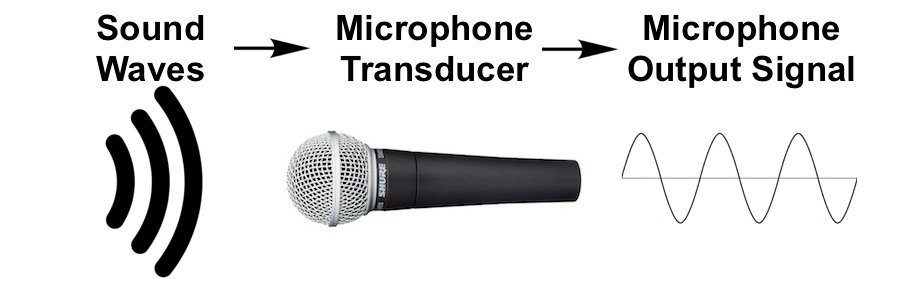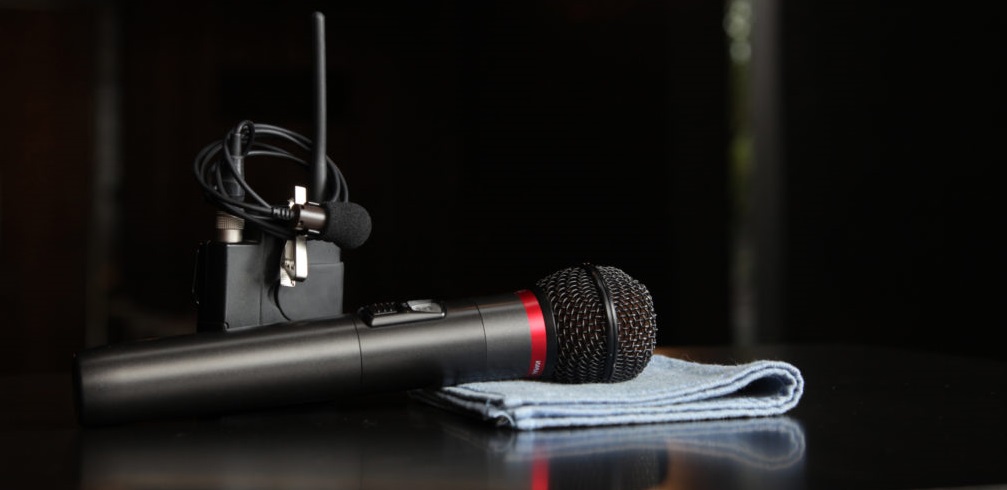Wireless microphones have come a long way since their invention in the early 1920s. Today, they are an essential part of live performances and speaker presentations, providing people with the freedom to move around without being tethered to a microphone cord. But how do they work? Let’s take a look.
How do Wireless Microphones Work

Wireless microphones transmit sound by sending radio waves through the air from the microphone to a receiver connected to a sound system. The microphone converts the sound waves into electrical signals which are then transmitted by the radio waves. The receiver picks up the radio waves and converts them back into electrical signals. These electrical signals are then amplified by the sound system and played through speakers so that everyone can hear.
There are two main types of wireless microphones: analog and digital. Analog wireless microphones have been around for longer and use Radio Frequency (RF) technology to transmit audio signals. Digital wireless microphones are a newer technology that uses Digital Wireless (DW) technology to transmit audio signals. Both types of wireless microphones have their own advantages and disadvantages.
Analog vs. Digital Wireless Microphones
Analog wireless microphones are typically less expensive than digital wireless microphones. However, analog wireless microphones are also more susceptible to interference from other RF devices such as cell phones and Wi-Fi routers. In addition, because analog wireless microphone systems use lower frequencies, they have shorter range than digital wireless microphone systems.
Digital wireless microphone systems are more expensive than analog systems, but they offer several advantages. Digital wireless systems use higher frequencies, which means they have a longer range than analog systems. In addition, digital systems are less likely to experience interference from other RF devices because each digital system creates its own frequency channel.
The Many Benefits of Wireless Microphones

There are many benefits to using wireless microphones, including the fact that they are much easier to use than traditional wired microphones. Wireless microphones also offer a cleaner look and feel to your setup, and they can be used in a variety of different settings. Let’s take a closer look at some of the other benefits of using wireless microphones.
Convenience
One of the biggest benefits of using wireless microphones is that they are much more convenient to use than traditional wired microphones. With wireless microphones, you don’t have to worry about tripping over cords or getting tangled up in them. Wireless microphones also allow you to move around more freely, which can be a big advantage when you’re giving a presentation or performing onstage.
Flexibility
Another big advantage of wireless microphones is that they offer a lot more flexibility than traditional wired microphones. Wireless microphone systems typically come with multiple receivers, so you can use them in a variety of different settings. For example, if you’re giving a presentation in front of a large audience, you can use multiple receivers to ensure that everyone in the audience can hear you clearly. Alternatively, if you’re giving a more intimate performance, you can use just one receiver and place it close to the stage so that your voice will carry better.
Improved Sound Quality
In addition to being more convenient and flexible, wireless microphones also offer improved sound quality over their wired counterparts. This is because there’s no longer any need for an audio cable to connect the microphone to the speaker system. This means that there’s less chance for interference or Static noise-Cancelling to distort the sound quality. Additionally, most wireless microphone systems come with built-in equalizers that allow you to adjust the sound quality to your liking.
The Disadvantages of Wireless Microphones

Though they are convenient and relatively affordable, wireless microphones have a few key disadvantages that you should be aware of before making a purchase.
Interference
One of the biggest problems with wireless microphones is interference. When there are multiple wireless devices operating on the same frequency, they can interfere with each other, causing clicking noises or dropouts in the sound. If you’re using your wireless microphone in an environment where there are other wireless devices operating on the same frequency (such as in a crowded room or at a large event), you may need to consider using a different frequency to avoid interference.
Battery Life
Another disadvantage of wireless microphones is that they require batteries to operate. This can be a downside if you’re using your microphone for long periods of time or if you forget to charge the batteries before use. Some wireless microphone systems come with rechargeable batteries, which can help reduce the cost of replacement batteries over time.
Limitations on Distance
Wireless microphones typically have a limited range, meaning they will only work within a certain distance from the receiver. This can be problematic if you’re trying to use your microphone in a large room or outdoors. If you’re considering using a wireless microphone for events or performances where you’ll be moving around a lot, make sure to check the maximum range of the system to ensure it will work for your needs.
Read More: Wireless Microphone vs Wired – Which is Right for You?
Summary
Wireless microphones provide people with the freedom to move around while still being able to be heard clearly by others. So how do they work? By transmitting radio waves from the microphone to a receiver connected to a sound system. There are two main types of wireless microphones—analog and digital—each with its own advantages and disadvantages.
If you’re considering purchasing a wireless microphone, it’s important to weigh the pros and cons carefully. While wireless microphones have some great advantages, their potential downsides should not be ignored.
Keep in mind that interference, battery life, and distance limitations can all affect how well your wireless microphone performs. With that said, as long as you’re aware of these potential issues and take steps to avoid them, a wireless microphone can be a great addition to your audio setup.




